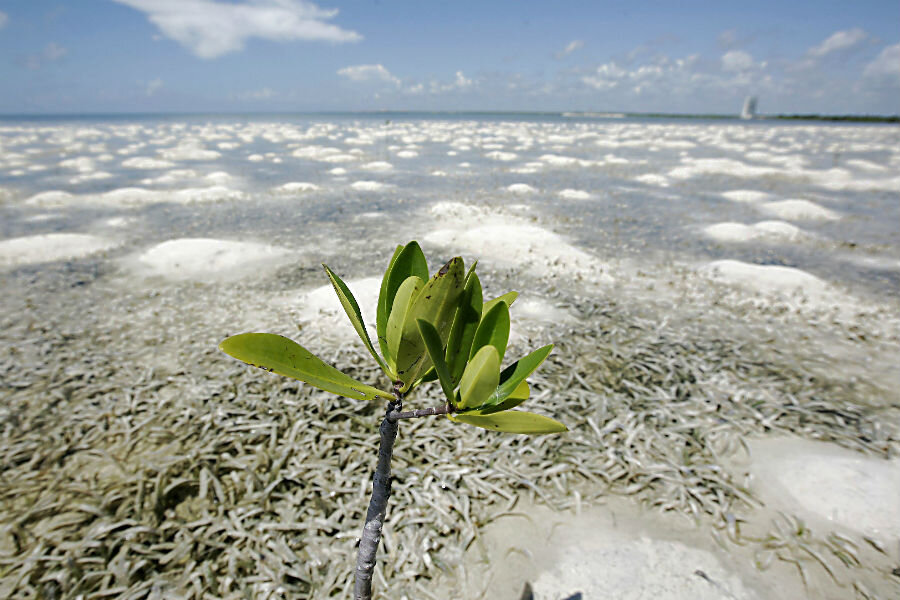Desert mangroves: stars of carbon sequestration
Loading...
Mangroves, “botanical amphibians” that occupy a world on the cusp of land and sea, have long been considered a neglected, under-appreciated form of forest, providing untold services for nature and mankind alike.
A new study, published Monday in Proceedings of the National Academy of Sciences, considers one increasingly crucial attribute – the ability to store carbon – comparing the aptitude of mangroves along coastal deserts with their more lush, tropical counterparts.
Specifically, the researchers studied mangroves’ ability to harbor carbon below ground, in the sediment peat layer, and the somewhat surprising results only add to the clamor for a deeper conservation drive, highlighting humanity's interest in doing so.
"Mangroves represent a thin layer between ocean and land, and yet we are seeing an ecosystem that is storing a lot of carbon in a very small area," said Paula Ezcurra, lead author of the study and a former researcher at Scripps Institution of Oceanography at UC San Diego, in a press release.
Ms. Ezcurra and her colleagues studied the mangrove systems at two desert lagoons and two lusher, more tropical ones, delving deep beneath the mangled root systems to extract sediment samples.
Their work revealed a layer of non-decomposed roots, or peat, dating back two millennia, which acts as a sponge, soaking up atmospheric carbon.
And the results? They found that the desert systems stored up to five times more carbon below ground than their more tropical counterparts. The coastal desert mangroves they were studying, in Baja California, constitute a mere one percent of the land area, but store almost 30 percent of the region’s belowground carbon.
Yet there was more to it: mangroves on the rugged, rocky coastline were found to have built a far deeper layer of peat than their cousins on the flat coastal floodplains – the latter having been forced to migrate in response to sea level rise.
"The results show how these ecosystems have been adapting to climate change and sea-level rise for thousands of years," said Octavio Aburto-Oropeza, assistant professor at the Scripps Center for Marine Biodiversity and Conservation. “Understanding the link between the natural history and carbon storage capacity of mangrove environments could give us insight into future climate change and sea-level rise.”
Even without considering these underground carbon storage facilities, created by countless generations of mangroves, the live biomass of mangroves is of huge importance to the world’s carbon balance, too.
In fact, on average, mangroves have double the amount of live biomass compared with tropical forests in general.
“Mangrove forests are among the most carbon-rich habitats on the planet,” writes Mark Spalding, a senior marine scientist at The Nature Conservancy. “Although they occupy just a fraction of the world’s surface, they pack a punch.”
Yet, as with most of the world’s forests, mankind has been poor stewards of these vital ecosystems, eradicating them by three percent each year.
But as this work emphasizes, with mangrove forests, their removal robs humanity of an incredibly efficient natural remedy to carbon emissions. Moreover, as their destruction normally sweeps away the peat in its wake, that rich store of carbon, held in check for thousands of years, is released once more into the atmosphere.
"Our study helps to further quantify the value of mangrove forest ecosystems, and highlights the importance of mangrove conservation," said Exequiel Ezcurra, an adjunct professor at Scripps and professor of botany and plant sciences at the University of California, Riverside.
"Hopefully it will serve to underscore the urgent need for mangrove protection and for the serious appraisal of the environmental services provided by common-access resources."








